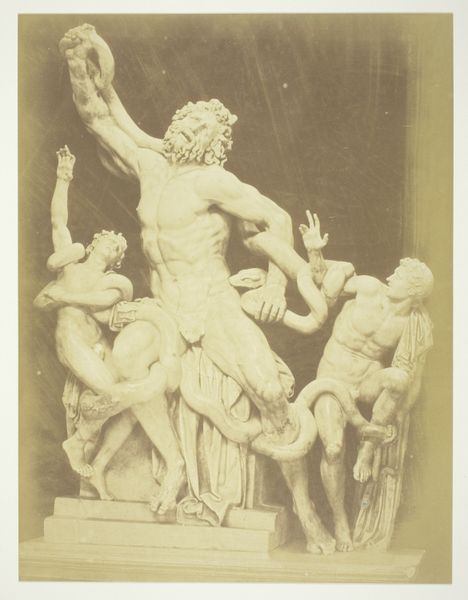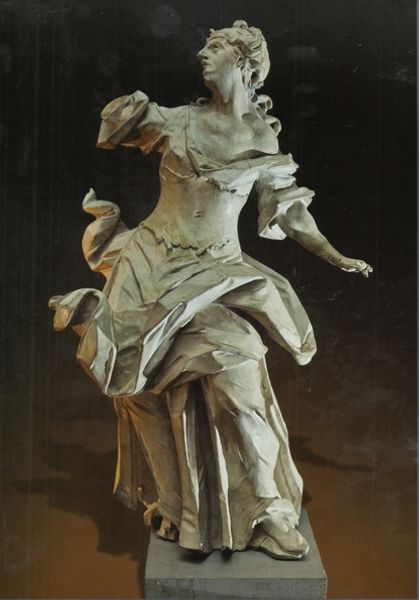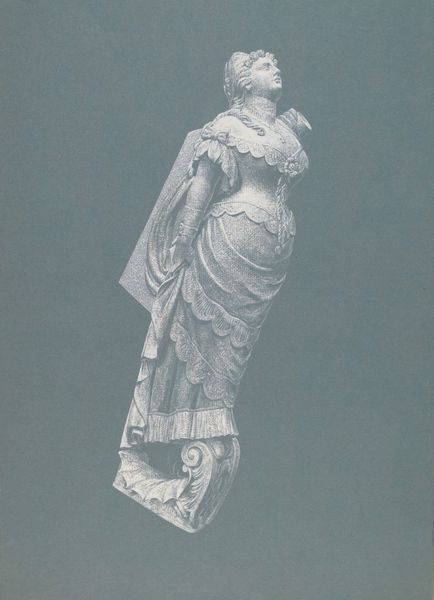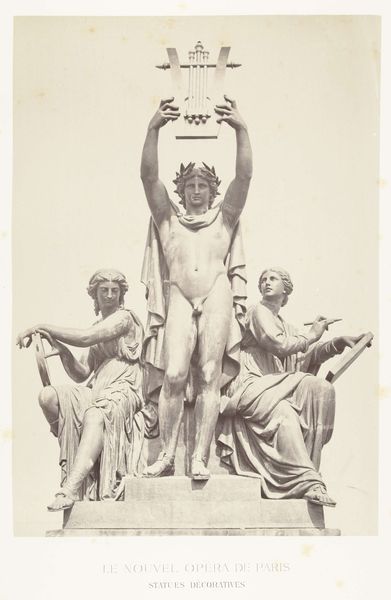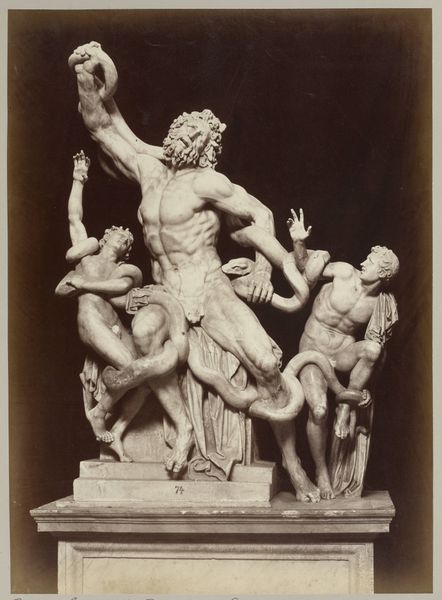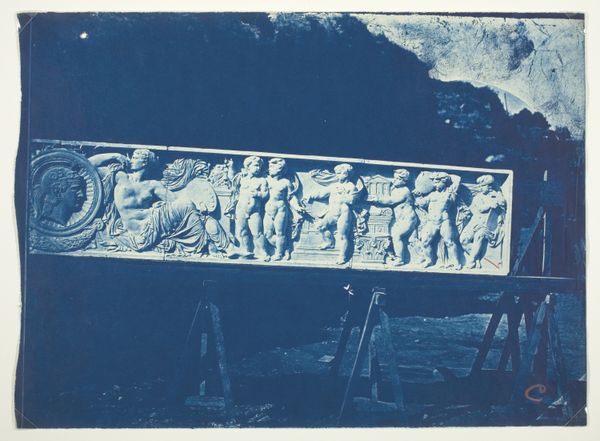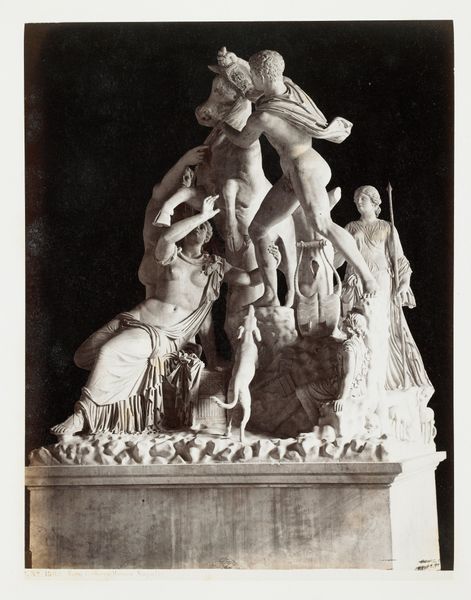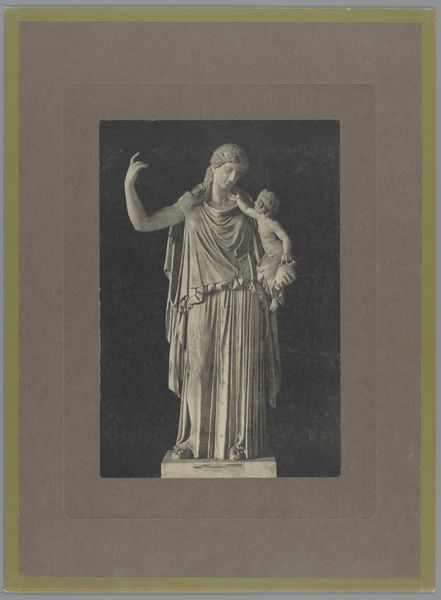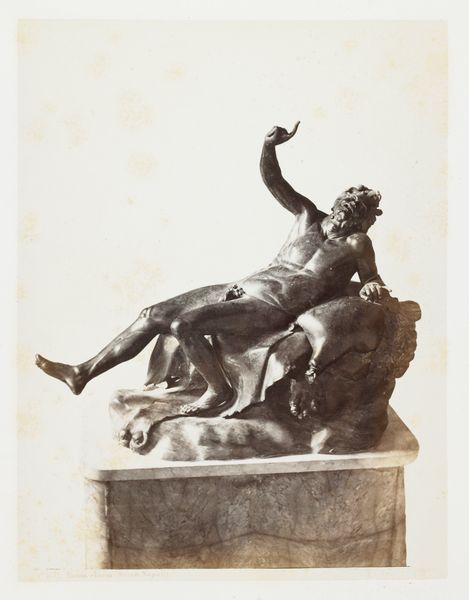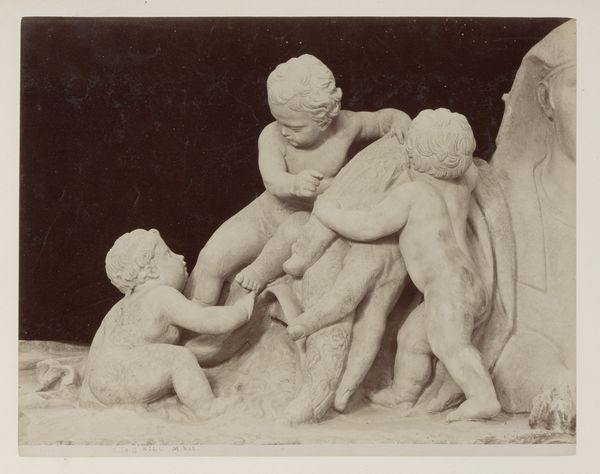
sculpture
#
sculpture
#
greek-and-roman-art
#
landscape
#
figuration
#
sculpture
Dimensions: image: 11 x 15 in. (27.9 x 38.1 cm)
Copyright: National Gallery of Art: CC0 1.0
Curator: This artwork is titled "Four Statues" by Adolphe Terris, dating back to approximately 1868. Editor: My first impression is one of cool stillness, emphasized by the almost ghostly blue hue. They remind me of archaeological digs; the statues are isolated and imposing. Curator: That's insightful. This cyanotype photographic print resonates with the rising interest in classical antiquity at the time. Photography allowed a wider audience to engage with sculptures and aesthetics previously confined to elite circles. Editor: It also reminds me how the industrial production of reproductions shapes the access to and understanding of antique forms. We can consider how plaster casts democratized ancient artworks. It's interesting how photography intervenes here by presenting its own visual texture. Curator: Indeed, we observe the fusion of classical sculpture with modern photographic techniques to disseminate art more widely. Terris, with pieces such as this, participated in forming a visual culture, helping cement a collective memory. Editor: Precisely. Thinking materially, what's intriguing to me is this convergence—a sculpture represented in a photograph that mimics the appearance of classical antiquity in an age increasingly fascinated with mechanical reproduction. It creates a layered experience, making us question our perspective. Curator: And that photographic process, specifically the cyanotype, offers a relatively inexpensive way to copy and distribute the image compared to paintings. In museums like this, prints like these helped fuel the increasing appeal of ancient artworks. Editor: And these prints are really the product of both artistic skill, but also industrial processes, impacting and altering our view of these original sculpted objects themselves. It transforms what had once been considered the pinnacle of high art into accessible commodities. Curator: The cool blueness and solemn arrangement make us appreciate how the proliferation of photographic reproductions created a canon and democratized exposure. Editor: It's an artwork which provides a compelling example about our relationship with objects, highlighting art's materiality in culture, the mechanics of making, and the nature of labor and mass consumption in society.
Comments
No comments
Be the first to comment and join the conversation on the ultimate creative platform.
